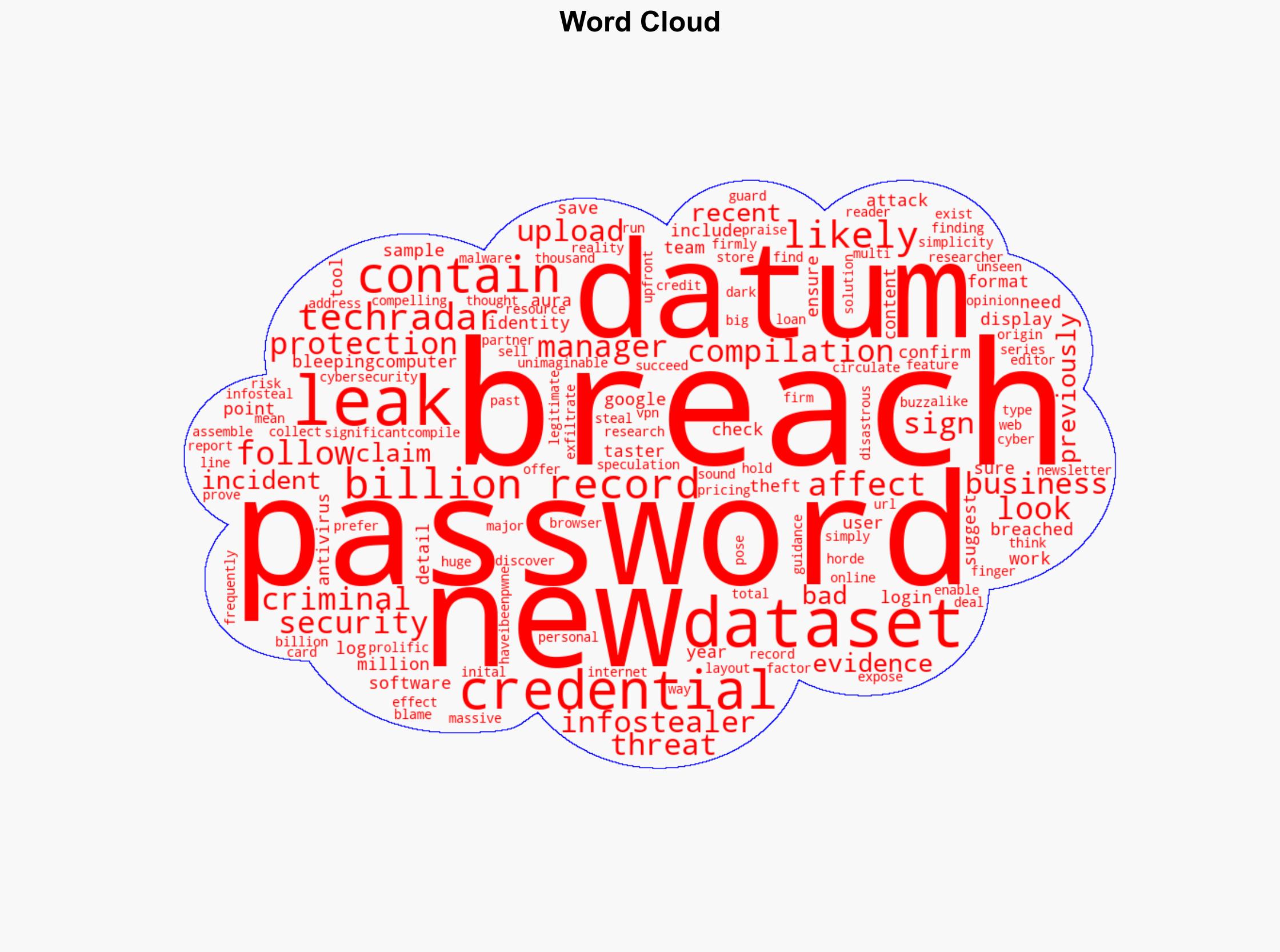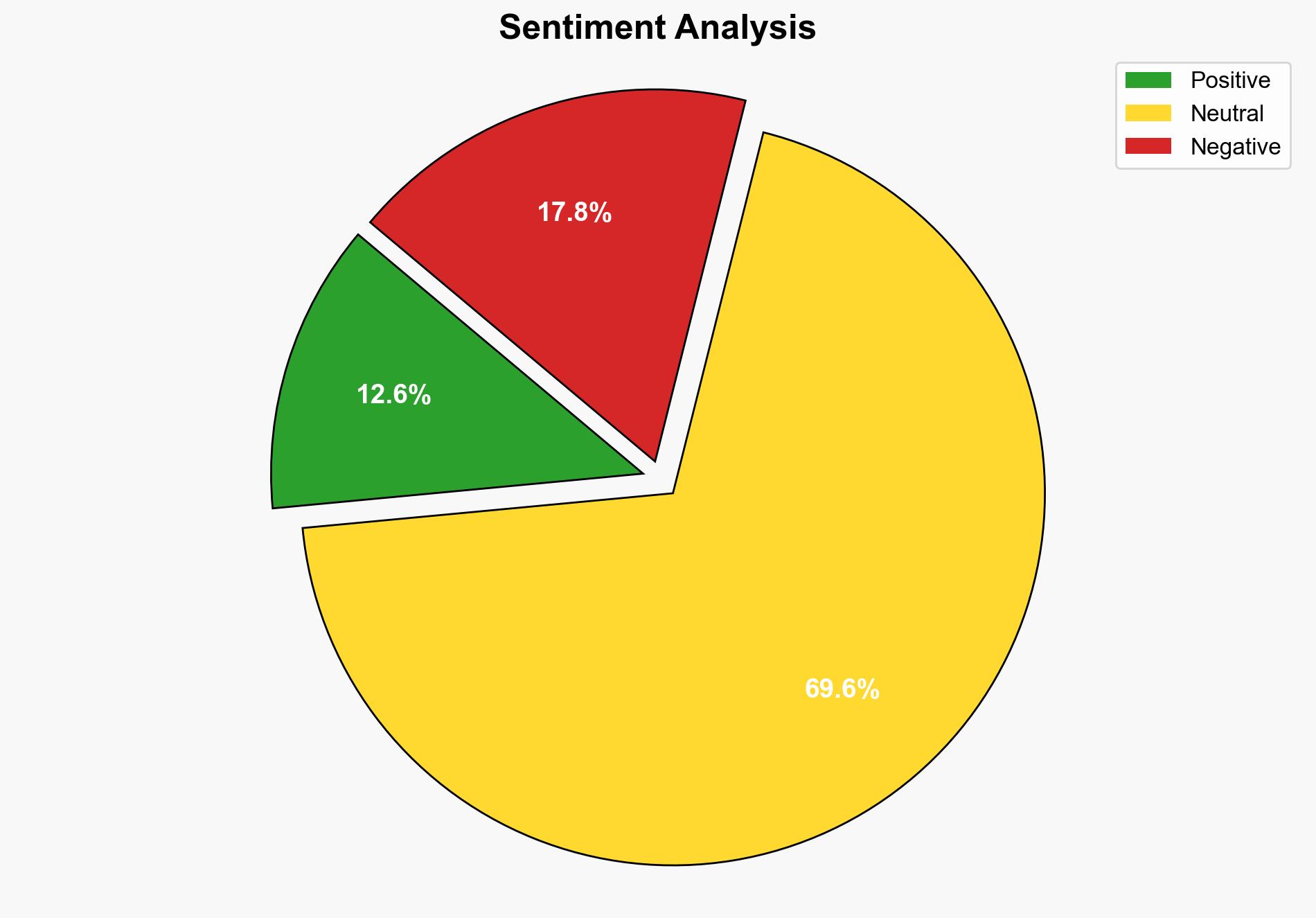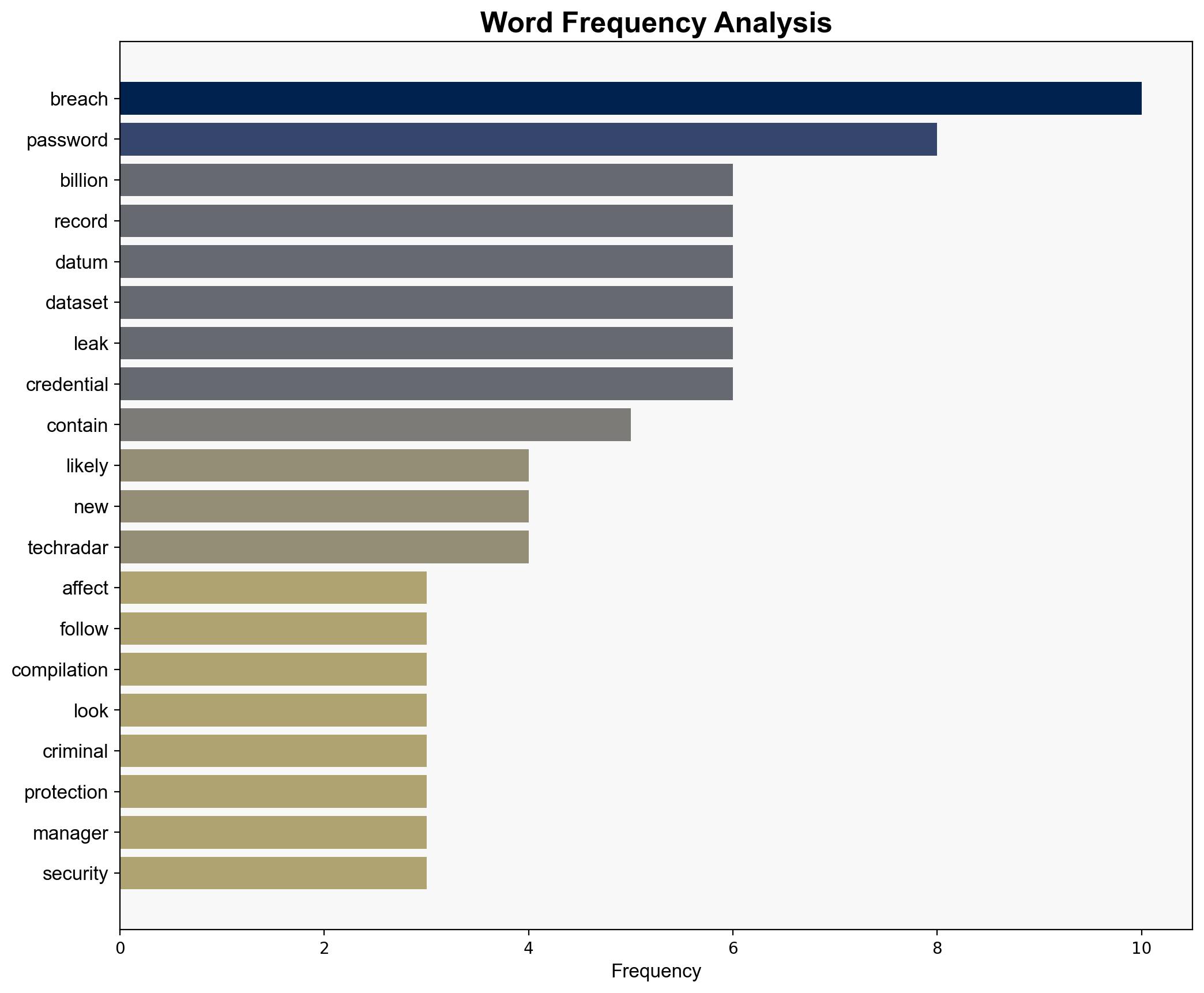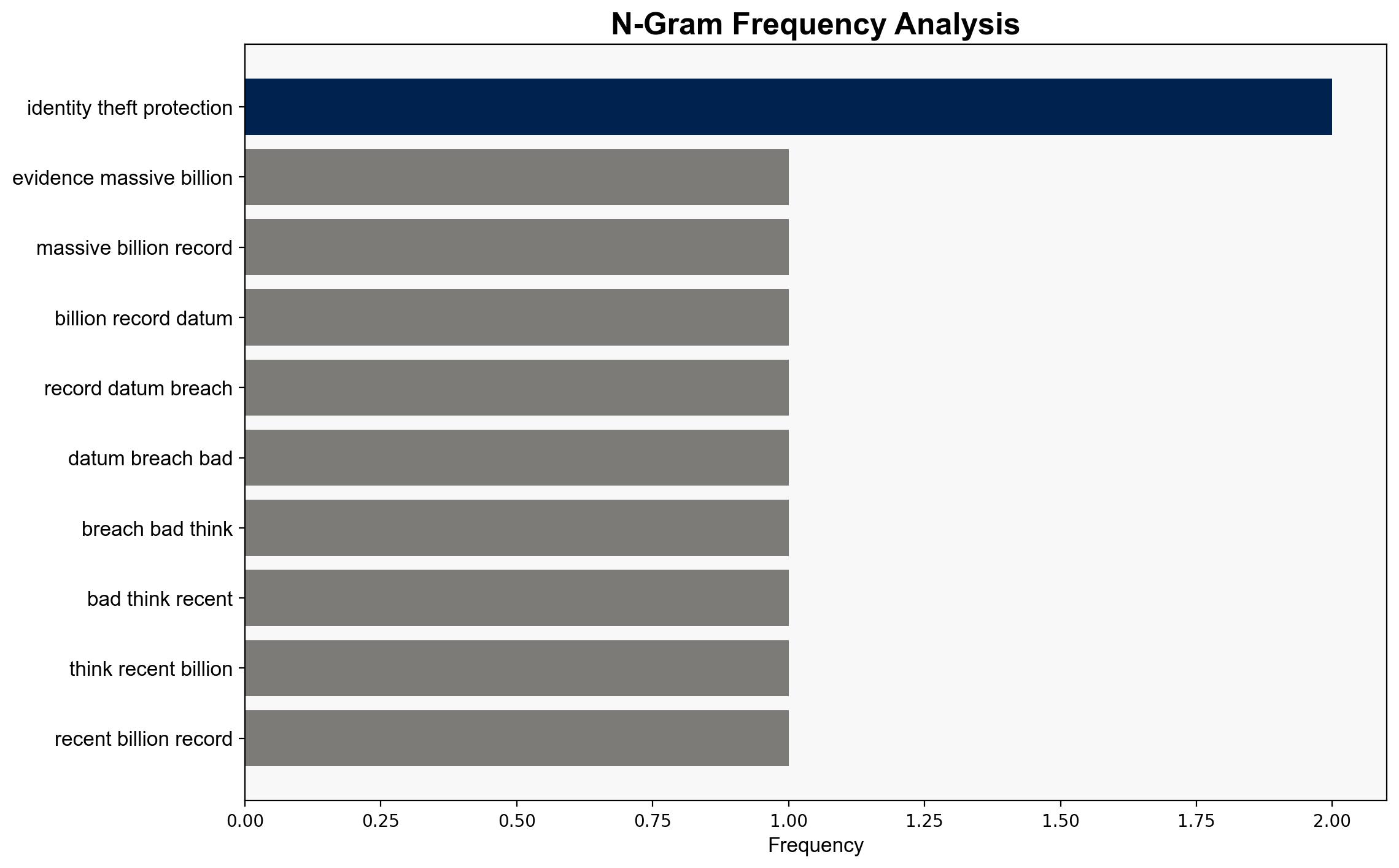No evidence – here’s why the massive 16 billion record data breach may not be as bad as first thought – TechRadar
Published on: 2025-06-23
Intelligence Report: No evidence – here’s why the massive 16 billion record data breach may not be as bad as first thought – TechRadar
1. BLUF (Bottom Line Up Front)
The recent report on a 16 billion record data breach suggests that the incident may not be as severe as initially perceived. The dataset likely comprises previously leaked credentials rather than new data. This finding reduces the immediate threat level but underscores the ongoing risk of data compilation by cybercriminals. It is crucial to maintain robust cybersecurity measures and identity theft protection to mitigate potential risks.
2. Detailed Analysis
The following structured analytic techniques have been applied to ensure methodological consistency:
Adversarial Threat Simulation
Cyber adversaries often compile existing breached credentials to exploit vulnerabilities. This simulation helps anticipate such tactics and improve resilience strategies.
Indicators Development
Monitoring for behavioral anomalies and unusual data compilations can provide early warning of potential threats.
Bayesian Scenario Modeling
Using probabilistic inference to predict potential cyberattack pathways allows for better preparation and response strategies.
3. Implications and Strategic Risks
The compilation of existing breached credentials poses a persistent threat to cybersecurity. While the immediate impact of this breach may be limited, the practice of aggregating data increases the risk of identity theft and fraud. Organizations must remain vigilant against infostealers and other malware that facilitate such compilations.
4. Recommendations and Outlook
- Enhance identity theft protection measures and encourage the use of multi-factor authentication (MFA) across all systems.
- Conduct regular training for staff to recognize and respond to social engineering attacks.
- Implement and maintain robust endpoint protection and antivirus software to guard against malware.
- Scenario-based projections:
- Best case: Increased awareness and improved cybersecurity measures reduce the impact of future data compilations.
- Worst case: Continued aggregation of breached data leads to widespread identity theft and financial fraud.
- Most likely: Ongoing vigilance and adaptation of cybersecurity strategies mitigate the majority of threats.
5. Key Individuals and Entities
James Shank, Ellen
6. Thematic Tags
national security threats, cybersecurity, data breach, identity theft, malware




